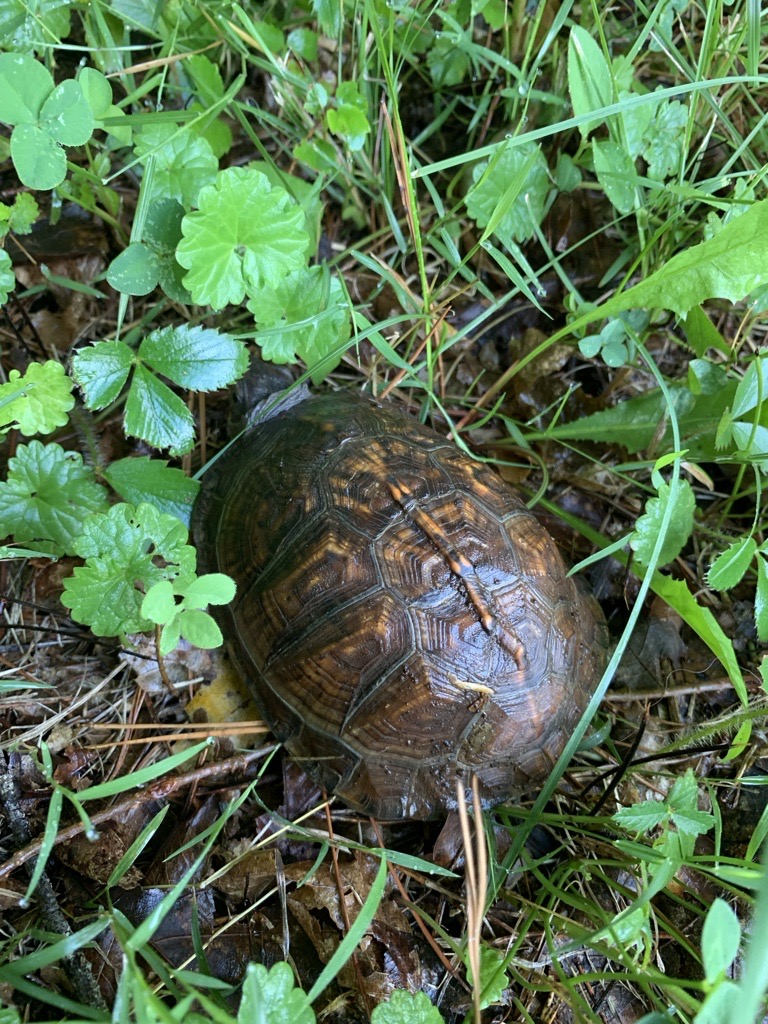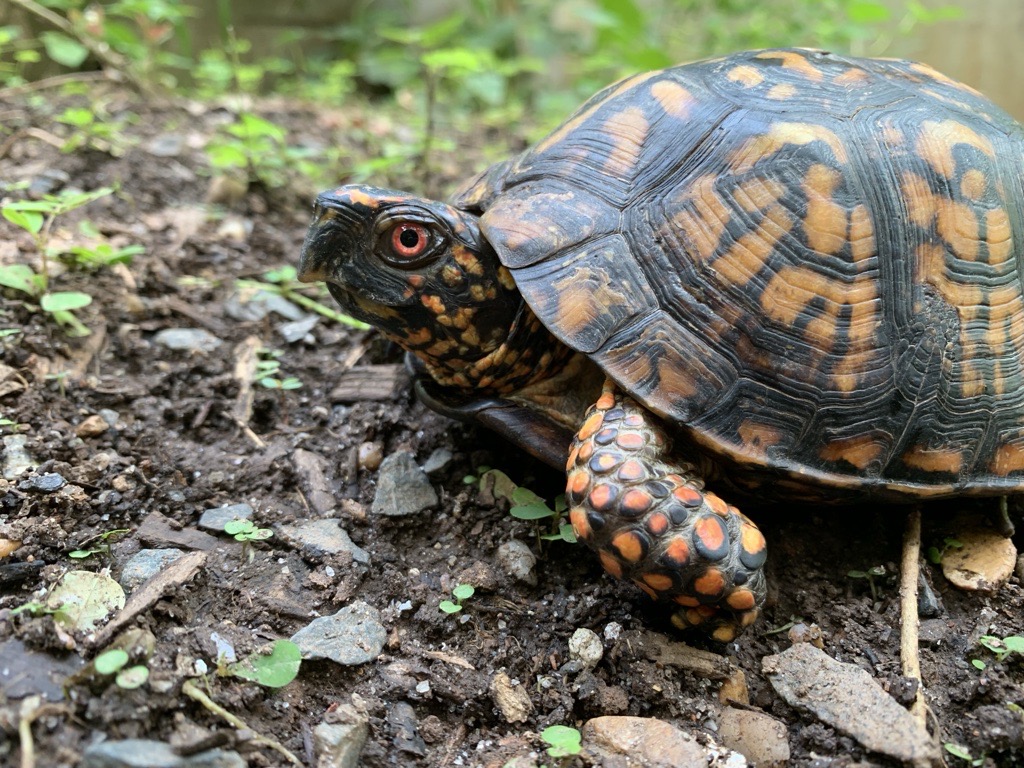
Box Turtle at Stowe

Box Turtle front view

River Cooter found on the road on the Stowe property near the ponds
There are many species of exclusively aquatic turtles in our area, including sliders and cooters. Many of these species, including yellow bellied sliders and red eared sliders, are capable of hybridizing, making identification challenging, especially from a distance. We also are home to snapping turtles, with their distinctive, dinosaur-like appearance and the elusive but fascinating soft shell turtle native to our area. These turtles will generally spend the majority of their lives in the water, but females will leave the water to lay their eggs, which must be buried in soil to develop properly, and it is during this period that many get struck by vehicles. Turtles (and reptiles in general) can recover from some pretty gnarly injuries with prompt care, so if you see a turtle that has been hit by a vehicle, contact a wildlife rehabilitator for more instructions on how to help.
We have many turtles that call the Conservancy property home, including all of the species mentioned above. Next time you’re visiting Stowe, keep an eye out for them, especially near the Pond Loop trails and Sunken Pond in Lost Hollow. Happy herping!

Box Turtle marked with nail polish for research tracking purposes

Yellow Bellied Sliders in the Sunken Pond at Lost Hollow





